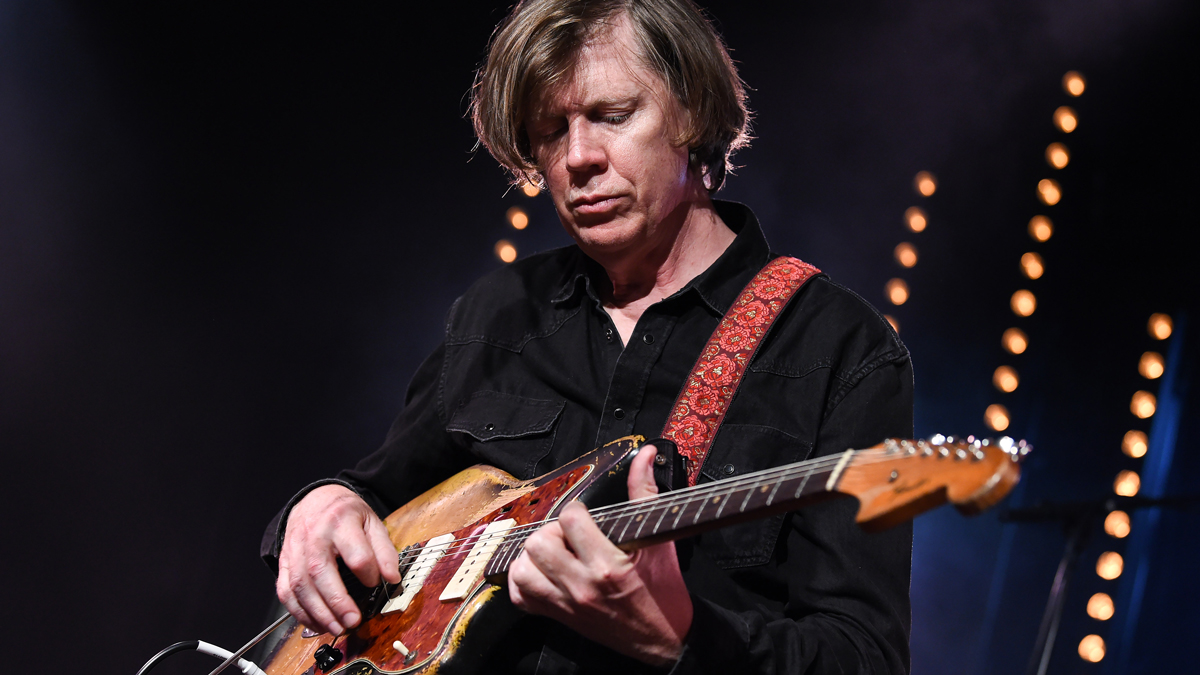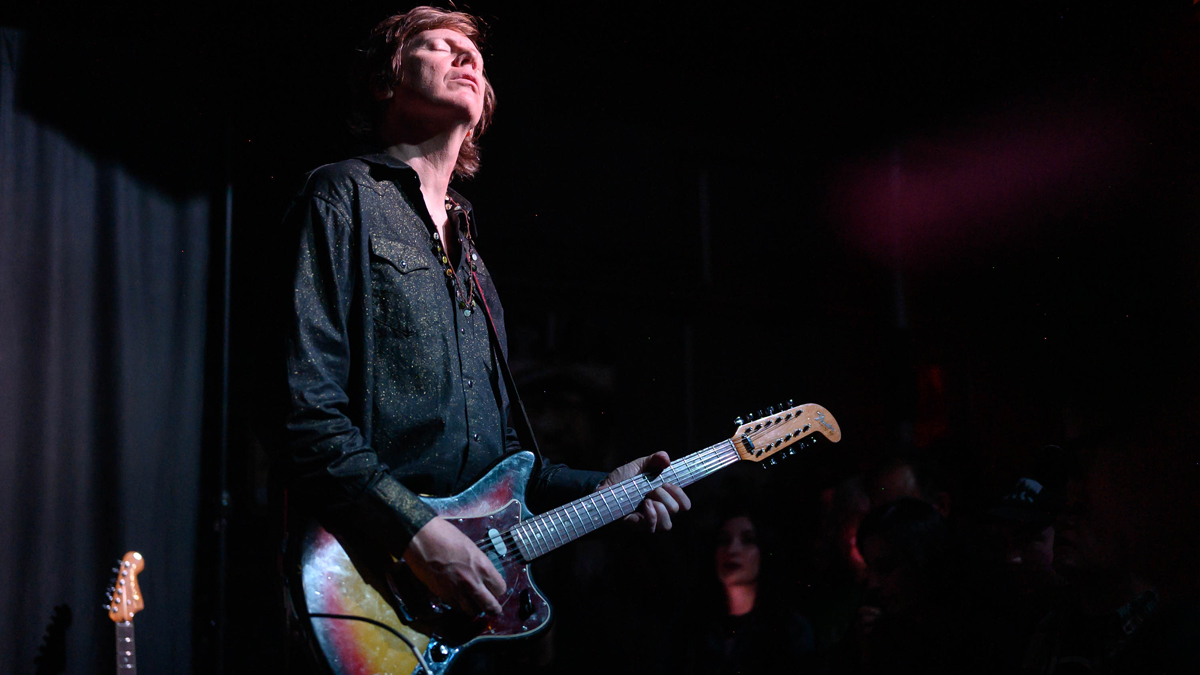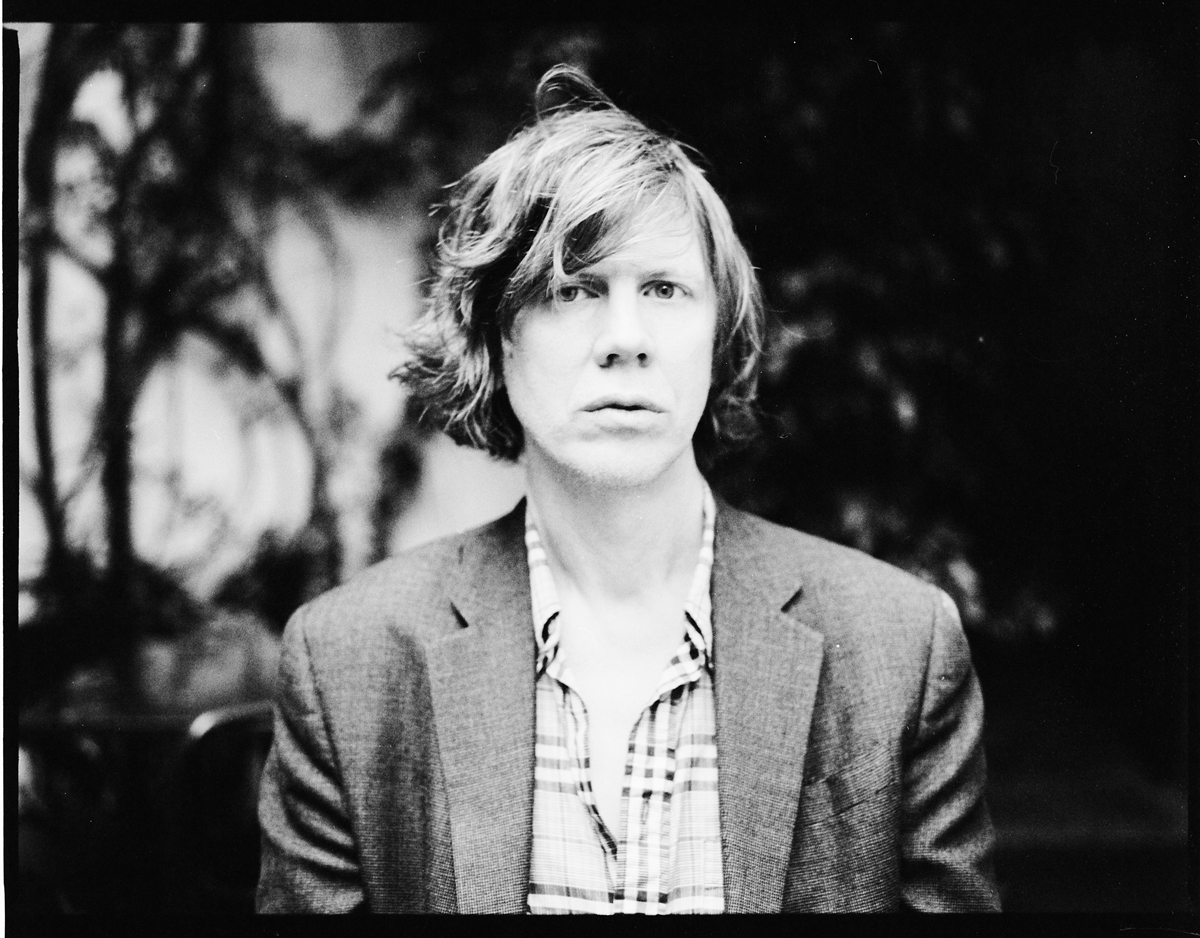Thurston Moore: “I’ve always liked that purity of guitar/amp action. The more I can get to that, the better I feel”
The Sonic Youth trailblazer on learning to record at home for new album Screen Time, and why he's fed up of hearing guitarists' pedalboards more than guitarists themselves

Given the abundance of home-brewed music produced by artists confined to their basements or personal studios by the pandemic, it’s not unusual that Thurston Moore recorded and mixed all of his recently released instrumental album, the moody and often spooky Screen Time (Southern Lord), in his North London flat.
What is surprising, however, is that Moore, who since the early '80s has been known for the genre-defining use of alternate tunings and modified junk-shop instruments that he and guitarist Lee Ranaldo deployed on Sonic Youth albums like Daydream Nation and Dirty, had never explored the pleasures of home recording before the world was turned on its head by a virus.
“I’m somewhat of a luddite where recording is concerned,” Moore says. “Sonic Youth had always had a studio, but all through those years of working there I didn't even know how to turn the light on. All I wanted to do was write songs, rehearse them, get them together, and go in there and get the work done and get out.”
But when Moore wanted to begin tracking what would eventually become Screen Time, the London studios that he likes to frequent were closed for business. “So finally, after 64 years, I acquired a recording apparatus for my home that I can actually overdub on because I just wanted to record,” he says.
And so, armed with a small multitrack Zoom recorder, four guitars and a well of pent-up inspiration, Moore began exploring a largely improvisatory world of sound that is both intimate in its origins and cinematic in its scope.
Jumping on an early afternoon Zoom after an all-night recording session (in a proper studio this time), the guitarist was kind enough to discuss his process, his guitars, and of course, what boxes he has on his current pedalboard.
What made you decide to go in an instrumental direction on Screen Time?
All the latest guitar news, interviews, lessons, reviews, deals and more, direct to your inbox!
I thought I would make a record that I could put up on Bandcamp that was my soundtrack to a film that could or could not exist
“I'd been thinking about how I am really into recording music that could be utilized in film. All through the years, even when Sonic Youth first started releasing records, a lot of the responses were always like, 'Oh, it's so filmic,' or, 'This music is very soundtrack-y.' And I thought I would make a record that I could put up on Bandcamp that was my soundtrack to a film that could or could not exist.
“I called it Screen Time, because it's about screen music. Every title on Screen Time is a bit of a film chapter, and every song title has an article like, 'the' in the title. The Parkbench, The Home, The Neighbor. So, in my mind, if I looked at those titles right now in the sequence, there's a storyline that goes on, and a bit of a film script.”
Does the title also have a double meaning?
“Yes. It’s also kind of dealing with the lives that we have now with technology, of everybody always looking at their screens, myself included. And so, without being judgmental about it, I was just like, 'Screen time is this time that we all sort of share quite a bit.'
“For me, this is something that's only been going in the last 20 years of my life. So, for most of my life, screen time was basically waking up on Saturday morning and watching cartoons, until your parents told you to get the hell out of the room. But for the young people that I associate with now, it's a very big part of their lives.”
Did you like working alone?
“I love collaborating. I love being in a group. But I also like really getting into just being in my own zone, headphones on, recording, listening to the tracks and mixing.
“And again, I’m not a high technique production person. I have one reverb that I use, that I accidentally found, that I knew how to sort of deploy. And so that’s the only reverb you’re hearing. And that’s the only reverb you will ever hear from me for quite a while, because it’s the only one I know how to use.
“There’s a couple of effects in Zoom that will always be the mainstay effects. I will never go near them and try to find another one or change one, because it sounds really cool to me. It’s sort of how I treat effects pedals, too. I was really late to the party with effects pedals.”
That’s interesting. I would have thought that was a world where you would have been an early adopter.
People I really appreciate as songwriters, guitarists, bands, whatever, I’ve started hearing their pedalboards on the records. And I wanted to hear them. I wanted to hear their fingers on the guitar
“In Sonic Youth, Lee started really early on, bringing more and more in, but when we first started nobody had a pedal. I think I eventually probably got a Rat pedal at some point, or some fuzz box, but I hate that stuff.
“To me, the most beautiful thing is like when the Australian band, the Scientists, from Perth, reformed a few years ago and did a tour of North America. People were taking pictures and sharing them in awe that there was not one pedal on stage. They just went directly into their Fender Twins and overdrove the Twins, and that was their sound. I just thought it looked beautiful.
“That’s how stages looked at one point in the late ’70s. You didn’t see a bunch of pedals up there. And it’s gotten to the point for me, and I won’t name names, that people I really appreciate as songwriters, guitarists, bands, whatever, I’ve started hearing their pedalboards on the records. And I wanted to hear them. I wanted to hear their fingers on the guitar.”

Despite your reservations, do you use a pedalboard now when you’re touring?
“I do, but people come to the gigs and they start taking iPhone photos of it and I’m like, 'I don’t really have much to show here.' For me, I’ve always liked that purity of guitar/amp action. The more that I can get to that, the better I feel.
“I just use three different distortion pedals: the first in the chain is the discontinued Dunlop Jimi Hendrix System Octave Fuzz. That pedal’s essential, because it allows me to really go into more crazed, free improvisation with guitar feedback and stuff. It allows me to really play with that, as it’s sort of octavizing the signal and creating this other distortion. And I never use it alone. It’s always in tandem with a Pro Co Turbo RAT.
“And then once in a while I’ll bring in an Electro-Harmonix Metal Muff with a sick top end boost to just to sort of tear people’s faces off, but I use that sparingly. And then I recently got a small Xotic EP Booster that somebody introduced to me to. I was like, 'I don’t want that little stupid tonal boost thing.' But I rent amps a lot when I tour, and this thing really saves the day.”
And delays or reverbs?
The agenda is to create an actual unified piece of music by improvising different ideas on each of the tracks
“I have an Electro-Harmonix Cathedral Stereo Reverb that I found in a thrift store new, in-box for like $15. I stared at it and I was like, 'God, do I really want to spend $15 on this? But I know this is worth more than $15.' And so I took it home and I was like, 'What am I going to do with this thing?'
“So, I plugged it in, I dialed something in, and I found something I like and wrote down exactly what that setting was, and it’s the only setting I’ve ever used on this pedal, which has like 400,000 different kinds of variations. And then finally I have a TC Electronic Mini Vortex flanger and HOF reverb. I don’t use those two hardly at all, but they’re so tiny they hardly take up any real estate on the 'board.”

When you’re recording pieces of instrumental music alone like the ones on Screen Time, there’s a lively dialogue between the different guitar tracks. Do you have the idea of what that conversation is going to be like before you start?
“No. It’s always the same. I basically have four guitars at home: a Fender Electric XII that my wife, Eva, gave to me for my 60th birthday, my pre-CBS Jazzmaster, a Martin 12-string and a Taylor six-string. I’ll grab one, put the headphones on, deploy a channel to record on, and then just kind of go and create an initial idea from improvisation. Sometimes it’ll just come right out of the gate and be something that works, and if not, I’ll modify or adjust it. And that will be my track.
“I find it really rewarding, because it’s like I’m just kind of creating in the moment and making something. It’s almost like making collage art: the agenda is to create an actual unified piece of music by improvising different ideas on each of the tracks.”
Are all of the sounds, like the metallic pings, that we’re hearing on Screen Time, produced by a guitar?
“Yes. if you're hearing any sort of that kind of higher frequency pinging, that's either me playing behind the bridge or above the nut or it’s using different cylindrical like a very thin drumstick. I'll use that as a node on a specific fret, which is something that Lee and I had been doing forever in Sonic Youth.
“A lot of that was just predicated upon the fact that the guitars that we had initially just didn't sound very good in traditional tunings. I still love doing that. I mean, to me, that's just fun!”
- Screen Time is out now via Southern Lord.
